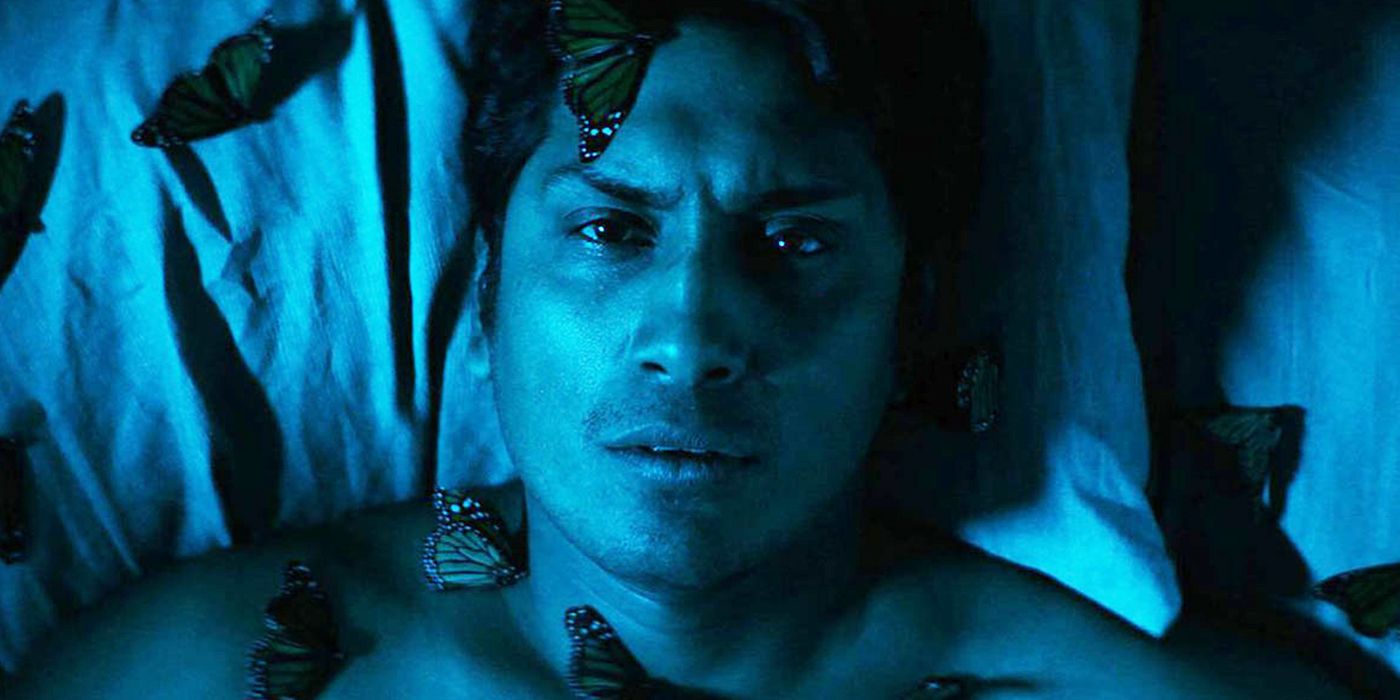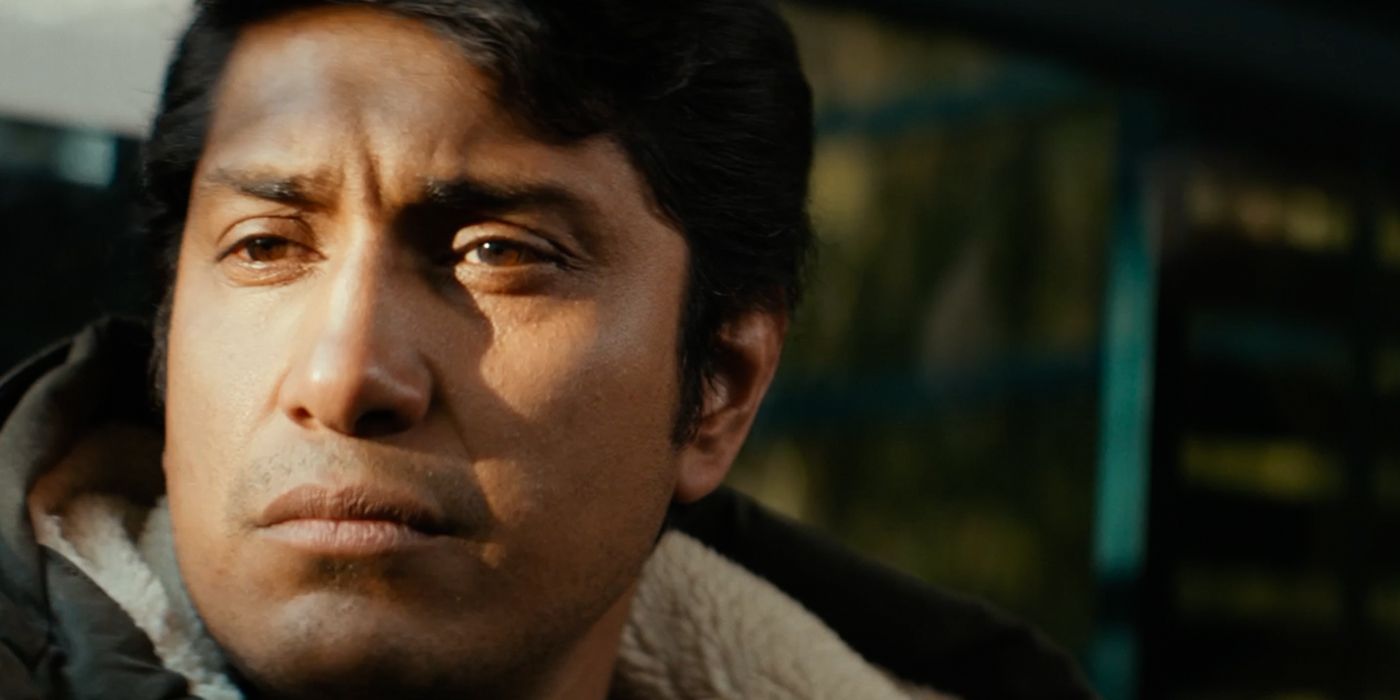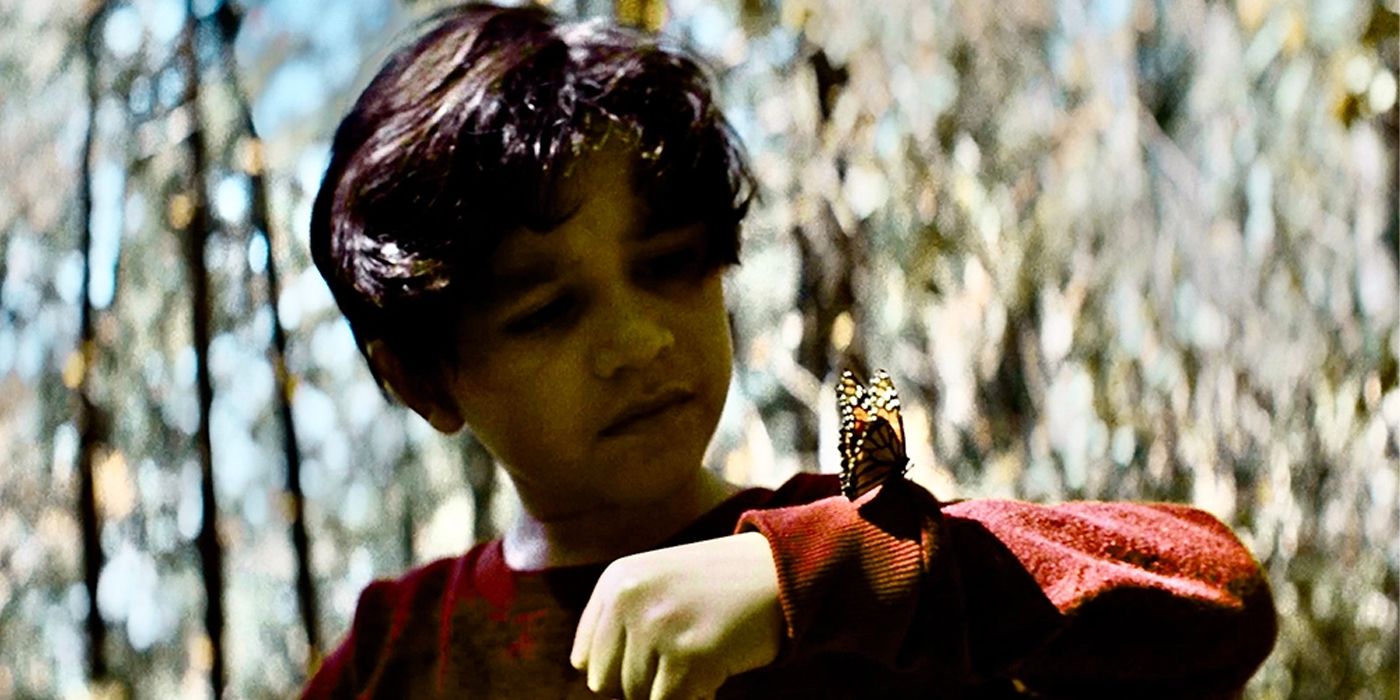
From its opening shot, Alexis Gambis’ Son of Monarchs is a captivating, thought-provoking film. The very first image audiences see — even before meeting protagonist Mendel (Tenoch Huerta) — is a close-up of a chrysalis being carefully, almost lovingly, dissected in a pool of clear liquid. This moment sets up the entire emotional experience of the movie: an uncomfortable clash between science and spirituality, the mundane and the sacred, precariously balanced on the quiet, hunched shoulders of a man struggling to reconcile his present station in life with the demons of his past. Written and directed by French Venezuelan film director (and biologist) Alexis Gambis, Son of Monarchs is an expertly crafted visual experience that weaves disparate themes and images.
The man cutting into the butterfly cocoon is Mendel, a scientist working on identifying and isolating the gene responsible for the monarch’s distinct wing color. Specifically, he’s involved in researching the optix gene, identifying how it determines color and patterns, and finding ways to manipulate the isolated gene (turning what should be orange scales on the butterfly’s wings blue). It’s a mildly controversial topic — at one point, a character compares it to Dr. Frankenstein’s research in Mary Shelley’s classic novel — but for Mendel, it’s deeply contradictory work: his grandmother instilled in him a reverence for the monarch butterflies, which would migrate to the Michoacán forests surrounding his hometown en masse each year. Mendel may have dedicated his professional life to studying these delicate creatures, but in doing so, destroys countless. It’s this inner conflict that drives the narrative.

The movie lacks a clear plotline, instead offering a story told through vignettes that offer a glimpse into the protagonist’s inner life. A Mexican biologist working in New York City, Mendel is an outsider — both among his peers in America but also back home in Angangueo, Mexico. The scientist clearly does not go home often, possibly because of the bad blood between him and his brother, Simon (Noé Hernández); yet, he seems out of place in New York City as well. He’s grown too dependent on his friendship with fellow Mexican-scientist Pablo (Juan Ugarte), and as a single, never-married middle-aged man, appears reluctant to form any meaningful relationships or lay down roots in his new home.
Played gently by Huerta, Mendel seems slightly uncomfortable wherever he goes, often slipping on and off various social masks as he performs the roles of happy-go-lucky peer, uncle, and boyfriend. Huerta offers a beautifully nuanced performance in Son of Monarchs; the actor imbues each moment, each glance, with a depth of meaning and feeling. Although he’s soft spoken, Huerta’s eyes are bold — brimming with emotion in one scene, then reflecting the dull luster of a traumatized mind in the next. As Mendel goes through his transformative journey, he holds himself slightly differently, slowly disregarding his “masks” and allowing his true self to emerge. Scene after scene, Huerta is a joy to watch.

Son of Monarchs is a bold film. Gambis maintains thematic tension throughout the story, constantly pulling Mendel between two very different worlds. The colors orange and blue are a dominant motif representing this, demonstrating the contrast of Mendel’s spiritual and secular lives. Thematically, Mendel’s inner turmoil is extended to offer a look at contemporary society: the inherent violence of scientific study, juxtaposed very intentionally with the environmental devastation, all done for the sake of progress. Son of Monarchs does not outright condemn these actions, instead suggesting humanity and Mother Nature must find a way to coexist. It’s a mature choice that opts for a more pragmatic approach to environmentalism — without villainizing people, like Simon, whose circumstances force them to work in occupations that they know harms the local environment.
Son of Monarchs is a visual treat, embracing a truncated, almost dream-like pacing, which compliments the various surreal shots of Mendel’s memories and nightmares. Interspersed between scenes are various scientific images from monarch butterfly research, presented for artistic effect. The movie rides the line of being artistically indulgent without feeling pretentious or gratuitous; however, Son of Monarchs is a challenging film, and no doubt some audiences will be put off by its psychological drama and visual storytelling. The loose structure of the plot adds an additional barrier that may turn off some viewers: this is a film that must be actively watched and savored — for those simply looking to be entertained, the work required to watch won’t feel worth the effort. Cinephiles, on the other hand, will rejoice at the lush visuals and daring mise-en-scene in Sons of Monarchs — and will no doubt keep an eye out for Gambis’ next project.






